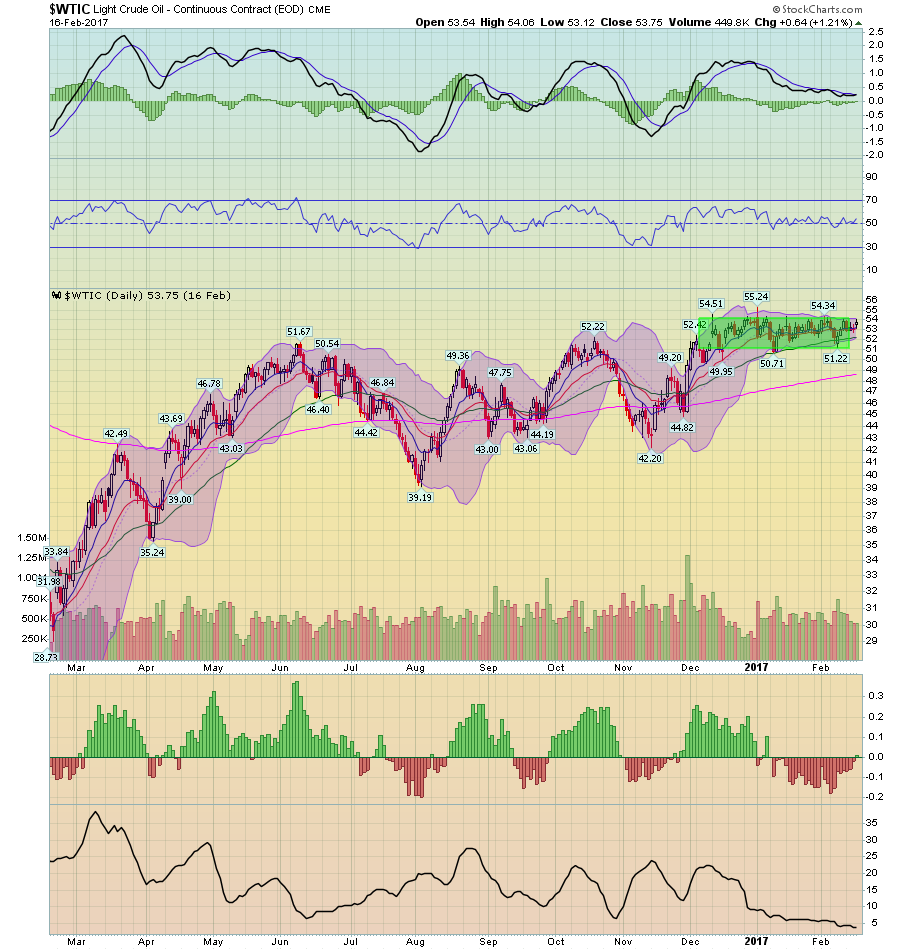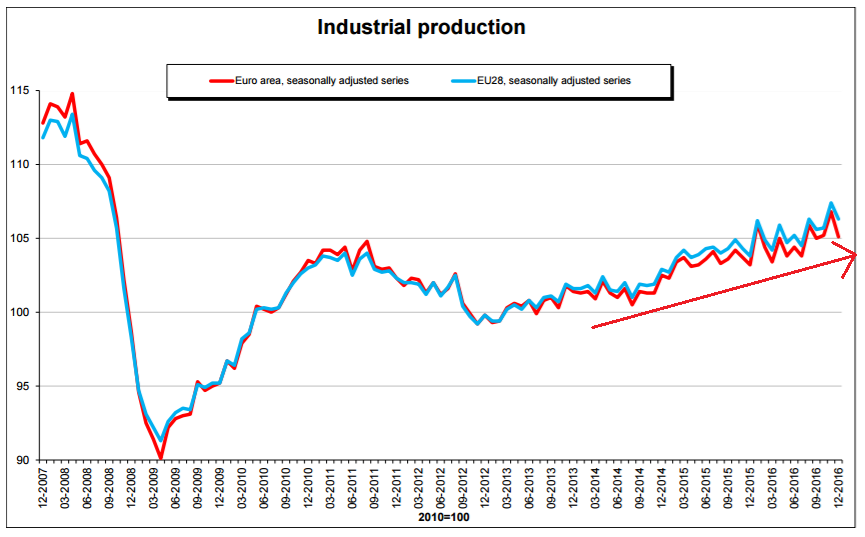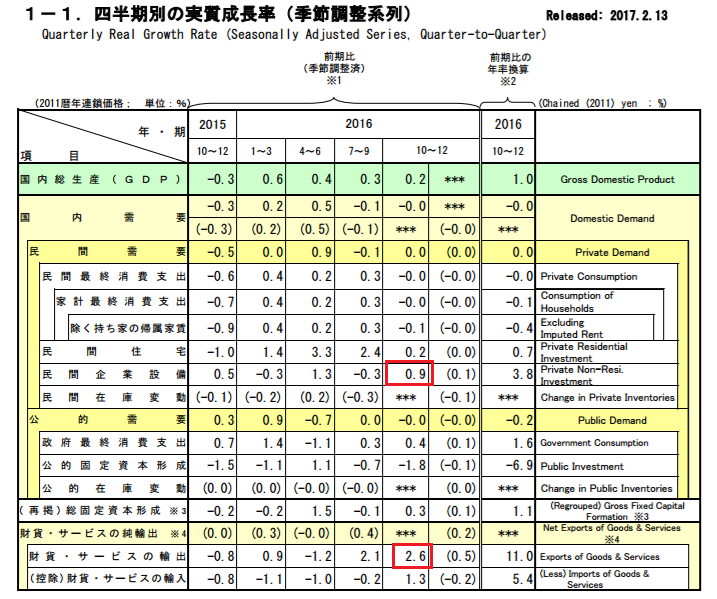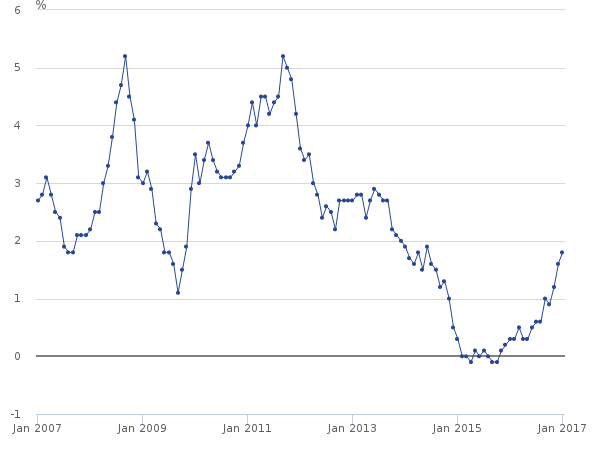After several years of almost non-stop deflation talk, inflation is now back. Both U.S. CPI measures – core and overall – are over 2%. And the UKs inflation is clearly accelerating. Energy prices are the primary reason for the resurgence. After OPEC increased production in 2014, oil prices dropped sharply. But they have slightly more than doubled since the beginning of 2016. According to the latest estimate, OPEC currently projects that supply and demand will be in balance by the end of this year, if not sooner. Oil prices have traded in a range between 50 and 55 since the first of the year. However, should prices meaningfully break through resistance, there is ample technical room to move higher:

Industrial metals are also in a year-long uptrend, adding additional upside price pressure:

This increase in raw material prices could potentially alter the central bank policy landscape in the next 12-18 months.
Australian economic releases continue to show an economy that is more than holding its own. While car sales were down .2%, the overall trend continues to show a data series that is currently at highs for this economic cycle:

And the unemployment rate continues to fluctuate around the 5.7% level, where is has remained for the last year:

While the Australian economy is not increasing its growth rate, there is also no reason to argue for an upcoming slowdown, either.
European news continues to point in a slightly more bullish direction. The second reading of 4Q GDP was .4% Q/Q and 1.7% Y/Y, which is a slight acceleration in overall growth from the 3Q. Industrial production dropped 1.6% M/M while growing 2% Y/Y. Moreover, this statistic continues its year 2-year uptrend:

And exports grew 6% Y/Y while imports rose 4%. The region continues to have a large trade surplus. EU economic news picked-up steam in the last quarter of 2016. While the increase is not large, it is noticeable and continues through this week’s data.
Japanese news continues to show promise. GDP grew .2%, due to large increases in non-residential investment and exports – both key growth components of “Abenomics:”

But the lack of meaningful growth in consumer spending indicates the consumer is still unwilling to increase his spending, despite unemployment being under 4%. Industrial production provided additional good news: it increased for the 5th consecutive month, this time by .7%. More importantly, it rose a very strong 3.2% Y/Y.
UK news continues to potentially place the BOE in a policy bind. On one hand, unemployment was 4.8%, while the employment/population ratio was near multi-decade lows. Inflation was 1.8%, which continues this data series’ recent sharp upturn:

Moreover, the BOE projected inflation of 2.5%-2.7% in the next 12-24 months. Thanks to the energy component of CPI, that looks more and more like a possibility. But the latest .3% M/M decline in retail sales – and the .4% drop in the rolling three-month moving average – point to a looser monetary policy. Most central banks will err on the side of inflation fighting. Should the data continue to move in this direction – higher prices that increase at an uncomfortable rate – the BOE may have to raise rates to keep inflation expectations in check.
While the overall trend of growth is increasing, the world economy is also dealing with rising price pressures. So long as inflation expectations remain grounded, things will be OK. But once expectations increase central banks will have to increase rates, potentially slowing growth.
